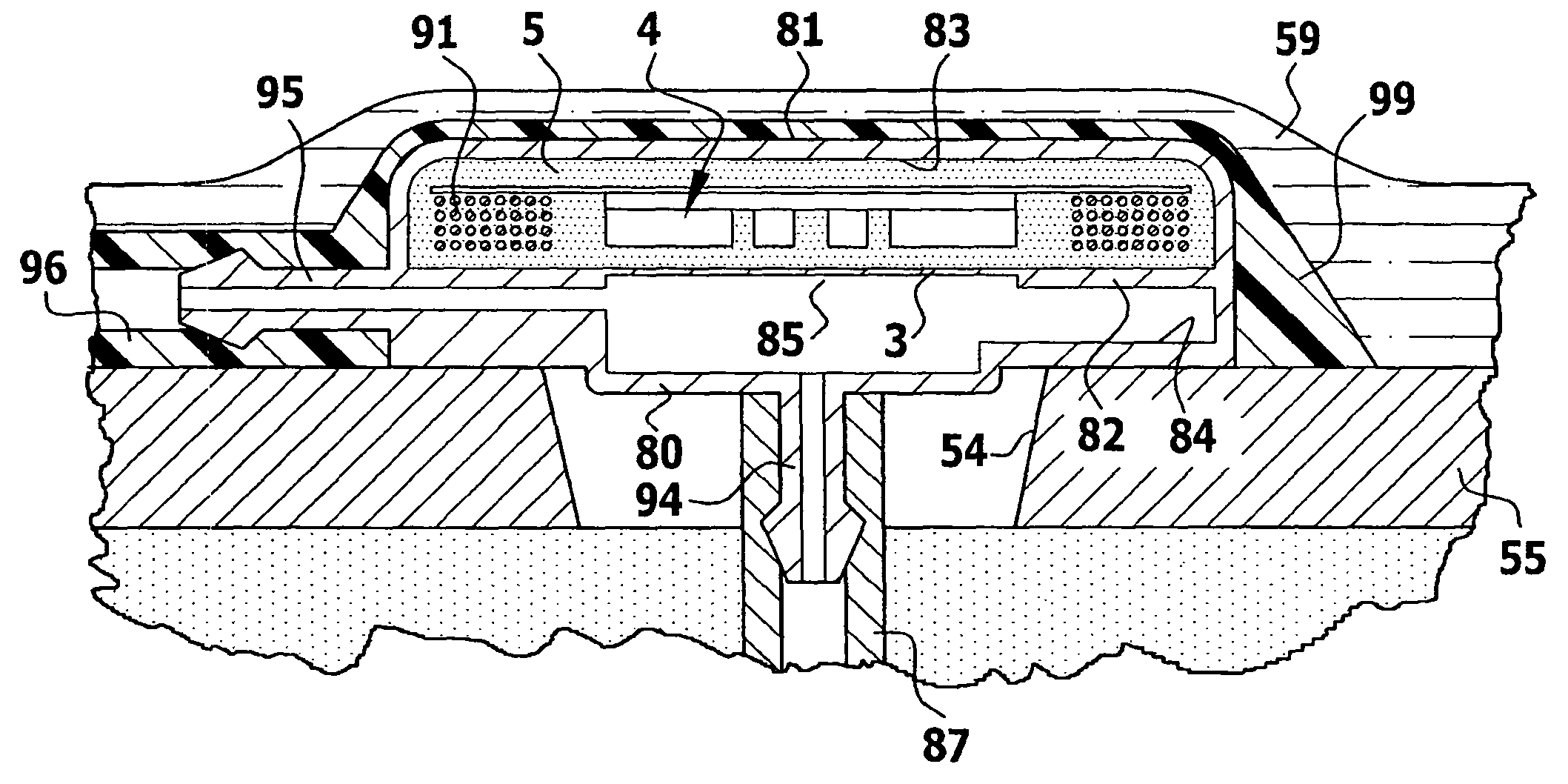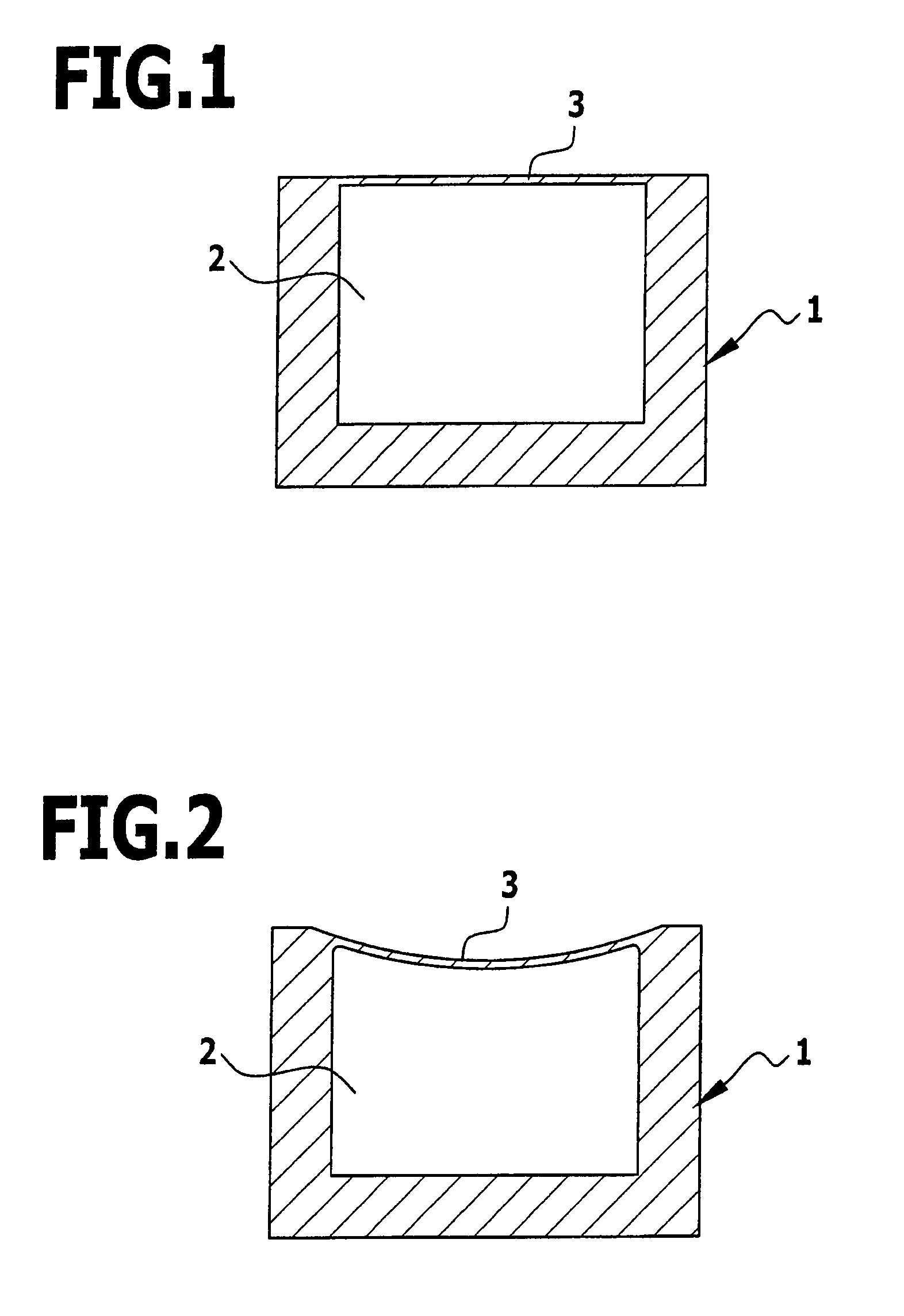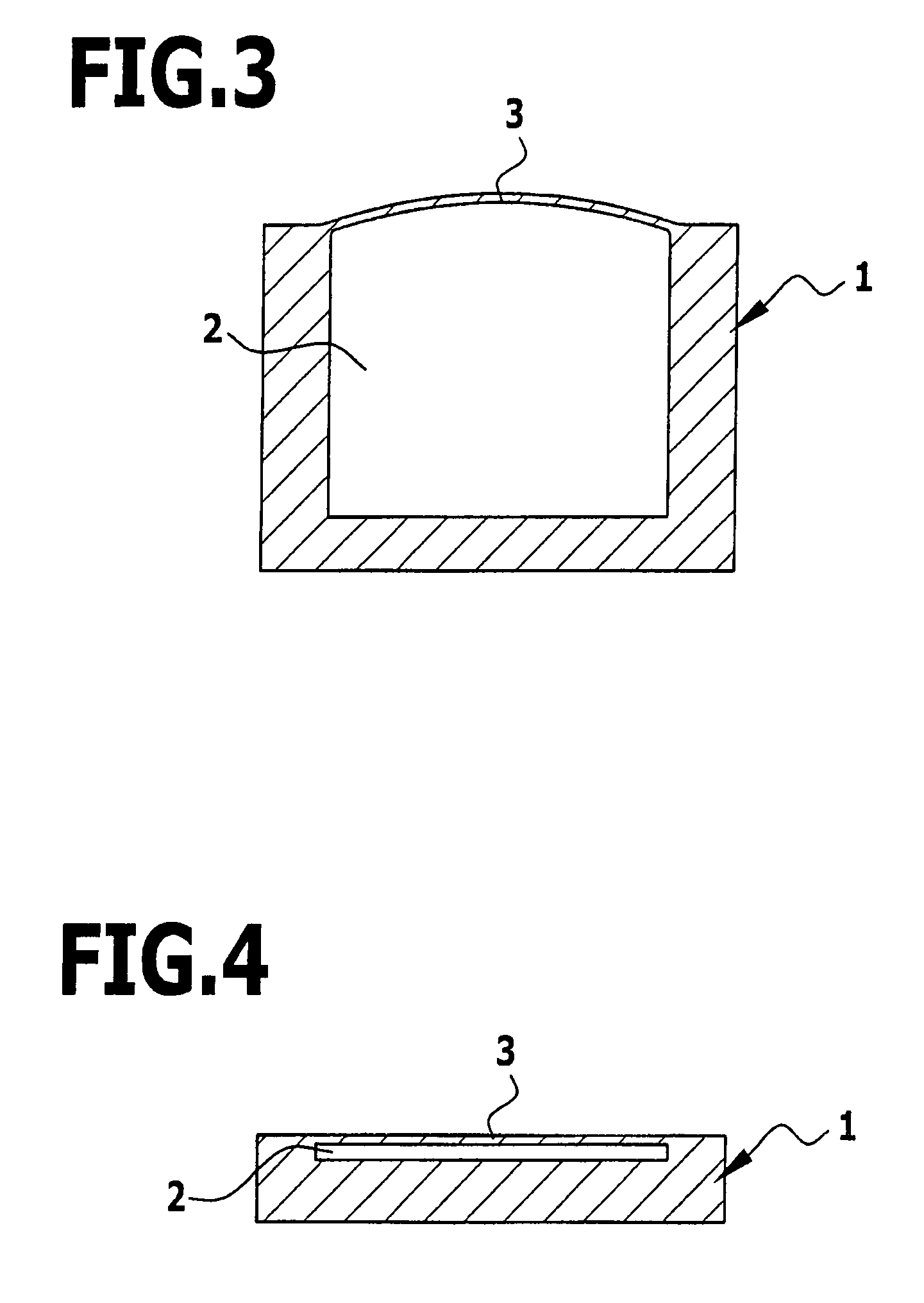Implantable device for recording intracranial pressures
- Summary
- Abstract
- Description
- Claims
- Application Information
AI Technical Summary
Benefits of technology
Problems solved by technology
Method used
Image
Examples
Embodiment Construction
[0152]As already explained, the implantable device for determining intracranial pressure comprises a rigid housing 1 with an interior 2, which is closed off to the outside by means of a flexible, preferably elastic membrane 3. The rigid housing is configured so that it is as free from deformation as possible at the occurring pressures. It can be made, for example, of ceramic, a biocompatible plastic (polyether ether ketone, polyether ketone ketone) or of metal (titanium, titanium alloy) and can additionally have an internal reinforcement structure, e.g. by supports passing through the interior or reinforcing ribs on the housing 1, which are not shown in the drawing.
[0153]The wall thickness of the housing lies between 0.3 millimeters and 2 millimeters, whereas the thickness of the membrane is considerably smaller, e.g. in the order of between 0.005 millimeters and 0.05 millimeters.
[0154]To produce the membrane, a single-piece housing can be worked from in particular, which is reduced...
PUM
 Login to View More
Login to View More Abstract
Description
Claims
Application Information
 Login to View More
Login to View More - R&D
- Intellectual Property
- Life Sciences
- Materials
- Tech Scout
- Unparalleled Data Quality
- Higher Quality Content
- 60% Fewer Hallucinations
Browse by: Latest US Patents, China's latest patents, Technical Efficacy Thesaurus, Application Domain, Technology Topic, Popular Technical Reports.
© 2025 PatSnap. All rights reserved.Legal|Privacy policy|Modern Slavery Act Transparency Statement|Sitemap|About US| Contact US: help@patsnap.com



